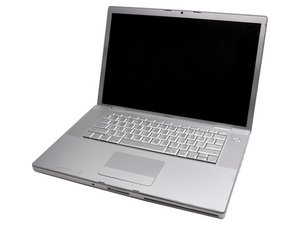@jimmysofat6864 start with this first
Power, but No Video (Computer begins to power up, the fans and hard drive spin, the Caps Lock key lights up when pressed, but there is no startup chime or video.)
Note: Examine the display carefully. An image may be barely present on the screen, but with no backlight clearly illuminating the image. In this case, the system is working properly except for the backlight. Use the Display: Dim Video troubleshooting section to resolve this issue.
Reset the SMC (power manager) as described in “
# Resetting the System Management Controller (SMC)” under “Troubleshooting Tips and Tricks” in the previous section.
- Try connecting an external display to check for intact video signal. If external video appears,
- check the system for any pending software or firmware updates and update accordingly.
- Verify that the LVDS cable connection is properly seated to its connector on the logic board and that the cables are not damaged. Replace the display assembly.
- Check all cable and flex connections to the logic board. Try restarting.
- Replace the logic board.
The thing with covering the MBP and running it to overheat is a really bad idea. It’ll put a strain on the system which may just further damage things. If it is the GPU then it is related to the design of the processor. Most of the failure is because of the flip chip design GPU and the issue could be the solder bumps between the IC and the substrate. Here is a very "quick and dirty" explanation of what causes most of the failure. It is not always a failure of the solder balls which connect the Flip Chip BGA package to the motherboard. It does happen and you can see why on here More commonly however is that the failure is due to the chip design itself.
As you can see the "bumps' are what actually connects the die to the substrate to make the chip complete. If these bumps fail, the die does no longer make contact with the substrate and thus no contact with the circuit board. The chip has failed.
Here you can see the space where the bump has failed and no longer makes contact. We are talking microns of space here. So, a bit of pressure on the top of the die potentially close the gap. Same with a reflow, it may allow some of material from the bump to reshape and starting to make contact again. The heating of cooling of the chip during use will eventually cause it to fail again.
If you really feel like you need a reflow, stay away from that whole covering-under-a- blanket deal. If you really must and as a last resort, check on here and for the reflow profile check on here

 7
7  9
9 
 2,3 mil
2,3 mil 
